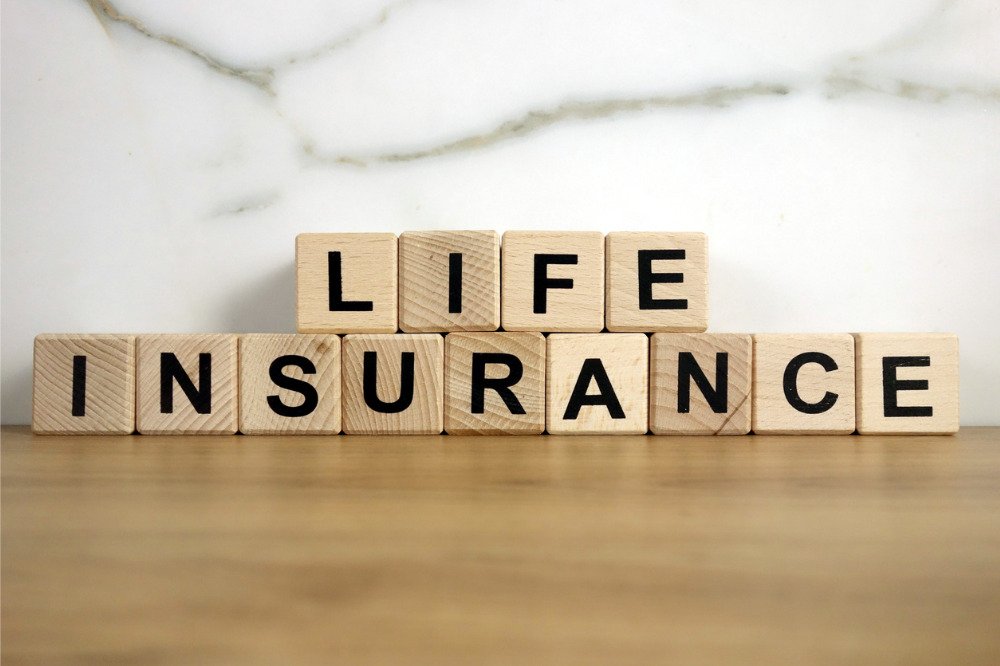The assurance Barometer Report from LIMRA and Life Happens found that 41 million people in the United States feel they need but do not carry life insurance. People have the propensity to overestimate how much anything will cost, which helps to explain this phenomenon.
People may not get the assurance they need because they have false beliefs about the cost and benefit of policies. According to the Insurance Barometer Survey, 51% of respondents estimated that a healthy 30-year-old male would pay $500 annually or more for a $250,000 term life insurance policy. On average, you should spend around $160 annually. That’s a significant difference between what people think something will cost and what it does. At least three out of every four persons in the United States have some kind of life insurance, according to the findings of a survey on life insurance conducted by Forbes Advisor. The percentage of uninsured women (22%) is as high as the percentage of uninsured men (11%).
The information you want to make an informed decision regarding life insurance is below.
Table Of Contents
- 1 What is Life Insurance?
- 2 To what extent does life insurance protect you?
- 3 Benefits Of Life Insurance
- 4 The Different Types of Life Insurance
- 5 How to Select the Best Type of Life Insurance Policy?
- 6
- 7 What Does Life Insurance Cost?
- 8 What Factors Affect the Price of Life Insurance?
- 9 How to select the Amount of Life Insurance Coverage?
- 10 How to Buy Life Insurance?
- 11 Conclusion
- 12 FAQs
- 13 Q. What do you need to do to get life insurance?
What is Life Insurance?
After your passing, the policy recipient receives a death benefit from your life assurance policy. Apply to and are accepted by life. Assurance companies. The business will pay your designated beneficiary (a family member, friend, or even another organization) a predetermined sum upon your death, provided that you have paid your premiums.
Funeral costs and lost wages can be covered with this money. With this money, a family can continue to make ends meet even after the death of the main breadwinner.

To what extent does life insurance protect you?
Except for suicide committed within the first two years of policy ownership, all other causes of death are covered by a life insurance policy. Aside from this specific exclusion, the policy covers all other causes of death.
It doesn’t matter what killed you; if your assurance company suspects you lied on your application, they may refuse to pay up on your claim. This is especially true if you pass away during the first few years of owning your policy. If a policyholder misrepresents their health or any other facts on the application, the insurer may refuse to pay any claims made by the policyholder’s heirs.
Another extremely limited scenario in which it claim could be denied is if the beneficiary murdered the insured person or if the claim is contested by someone who claims the policyholder was forced to change the beneficiary.
Benefits Of Life Insurance
Purchasing a life insurance policy can help you in several ways. You may count on the help of people like:
1. Life Insurance Distributions Are Tax-Free
If you hold a life assurance policy and die while it is active, your beneficiaries will get a lump sum death payment. Life insurance payouts are not taxable; beneficiaries are not required to record the money when they submit their tax returns.
2. Your dependents will be fine with living expenses.
Many experts advise carrying assurance seven to ten above your annual income. People who rely on your income should be fine with living expenditures or other big charges if you have a policy (or policies) of that magnitude. For example, your insurance policy may cover your children’s college tuition costs, eliminating the need for them to obtain student loans.
3. Life Insurance Can cover final Expenses
As of 2021, the national median cost of a funeral that includes a viewing and burial was $7,848. Because many Americans do not have enough funds to meet even a $400 emergency bill, paying for funerals can be a significant financial burden.
If you have a term life insurance policy, your descendants can utilize the money to cover your funeral expenses without diving into their assets or taking out a loan.
4. Chronic and terminal illnesses can be covered.
Many life insurance companies provide endorsements, also known as riders that you can add to your policy to supplement or modify your coverage. Under certain conditions, an accelerated benefits rider permits you to access some or all of your death benefits. Some policies, for example, allow you to access your death benefit. At the same time, you’re still alive to pay for your treatment or other expenses if you’ve been diagnosed with a terminal illness and are projected to survive less than 12 months.
5. Insurance Can Help You Supplement Your Retirement Savings
In addition to paying death benefits, a whole, universal, or variable life insurance policy can accumulate cash value. You can utilize the cash value accumulated over time to meet expenses like purchasing a car or a down payment on a home. You can also use it throughout your retirement years if necessary.
On the other hand, a life insurance policy should not be used in place of standard retirement programs such as a 401(k) or an IRA. Furthermore, cash-value of it is much more expensive than term life insurance, which has no savings component and only provides a death payment.

The Different Types of Life Insurance
1- Term Life Insurance
According to the Insurance Barometer Report, term life insurance is the most purchased type due to its low cost and high frequency of use.
Term life insurance protects for a predetermined period and has consistent premium payments throughout the policy’s tenure. The common options are policy lengths of 10, 15, 20, 25, and 30 years. During the policy’s term, your beneficiaries can file a claim and receive the death benefit money tax-free if you pass away. Guaranteed renewability means extending your coverage for another year after the policy’s initial term ends. But the annual renewal fee will go up by a set amount.
2- Permanent life insurance
The policy period for permanent life assurance is indefinite. Compared to term life, it costs more because:
- The effects may last for the rest of your life.
- A cash value is usually created.
- Cash value accumulates tax-free throughout the policy’s duration. It’s the assurance policy’s equivalent of a savings account. The cash value of a policy can usually be withdrawn from or used to secure a loan. When you surrender your policy, you will receive the cash value less the surrender charge.
- Don’t expect access to a large sum of cash immediately if you have a policy whose cash value builds slowly over many years. The projected cash value will be displayed in your policy illustration.
Permanent life insurance comes in a few different flavours:
1- The death benefit and cash value components of whole life assurance are assured and fixed. The dividends from many whole life insurance plans can lower premiums or add to the cash value.
2- Compared to whole of it, the provisions of universal life policies are often more accommodating. Depending on the policy, you may be able to adjust the amount you pay in premiums and the amount you get upon your death.
3- A cash value may be accrued in a universal life assurance policy. For instance, a cash value component of an indexed universal life insurance policy will track an index like the S&P 500. You’ll be able to pick and manage your investing subaccounts within variable universal life insurance.
4- For most people, $5,000 to $25,000 is plenty to cover the cost of a funeral and burial with a whole-life policy. Specifically to pay for one’s funeral and other final expenses, burial insurance was created.
5- Life insurance with survivorship benefits covers two people, typically a married couple, under a single policy. When both policyholders die, the policy’s beneficiaries get a lump sum payment equal to the death benefit. In most cases, a trust or federal estate taxes are part of a bigger financial strategy that includes survivorship life insurance.
How to Select the Best Type of Life Insurance Policy?
You may feel overwhelmed by the number of life insurance plans from which to select the best one.
- To begin, pick a its plan, either term or permanent.
- If you only want it for a set time, it’s term could be a good option. For instance, if you’re interested in “income replacement” insurance that would pay out during your working years in the event of your untimely demise.
- If you’re on a tighter budget, the term may be a better option. Lower rates are expected for term life insurance than permanent life insurance because it provides protection for a limited period and does not accumulate cash value.
- Your requirements for it could change as you progress through life’s stages. It is possible to change most it’s term plans into permanent ones. Options may vary by policy and insurance provider. With a term life conversion, you can transfer to permanent coverage without having to reapply or undergo a medical exam.
- However, a permanent life insurance policy will remain in effect for the rest of your life. Explore your alternatives for permanent life insurance if you’re interested in creating monetary worth. Suppose you are solely interested in the cash value accumulation offered by a permanent policy.
- In that case, you should put your money into a savings or investment vehicle and forgo the life insurance and charges inherent to the permanent policy.
- Moreover, beneficiaries are only sometimes expected to use cash value. At the policyholder’s passing, it’s company is usually entitled to the cash value.
- The policy’s death benefit is paid to your beneficiaries, not the cash value. Nonetheless, certain insurance types provide the death benefit and cash value for a larger premium.
What Does Life Insurance Cost?
Several variables affect how much you’ll pay for it. The life insurance policy you purchase will majorly affect the total cost. For the same amount of protection, a term assurance policy is much more cost-effective than a whole assurance policy.
You can expect your life insurance premium to be affected by the following:
-
Age:
Costs for insurance policies decrease with age, so it’s best to start saving for coverage as early as possible. The risk of dying is lower; therefore, the conclusion.
-
Sex:
In accordance with the National Center for Health Statistics, women have a life expectancy nearly five years greater than men. Because of this, it’s safe to assume that men will pay more than women for assurance (except in Montana, where insurers must provide gender-neutral life insurance rates).
-
Health:
Your health status strongly influences how much you pay for life insurance. The insurance will examine your medical history and current symptoms to determine your expected lifespan.
-
Lifestyle:
Life insurance premiums can be more expensive depending on factors like your criminal background, hazardous career, or hobbies (like scuba diving).
What Factors Affect the Price of Life Insurance?
Several different variables can influence life insurance rates. Although factors are beyond your control, some can be adjusted before (and even after) the application process to reduce the overall cost.
The best action plan is to purchase life insurance as soon as needed because your health and age determine the price.
If your health and lifestyle have improved since you were initially accepted for insurance, you may be eligible to request a risk class adjustment. Your rates will stay the same if it turns out that your health is worse than we thought at the time of underwriting. Your premiums may go down if your health improves. Adding more to your coverage can be cheaper than you thought.
How to select the Amount of Life Insurance Coverage?
To get a ballpark figure for your insurance needs, you can:
- Determine the total amount you need to cover, such as a mortgage, your children’s college education, and a retirement income replacement plan.
- Deduct whatever resources your loved ones already have, including savings and life assurance, to meet those costs. If your spouse eventually requires retirement funds, don’t include them.
- A sum equal to this is the minimum of it you should have. It could seem excessive if you’re trying to replace lost revenue over a long period. Quotes for life insurance are without cost, so it’s a good idea to shop around for the best deal.
- Invest what you can now while the rate is low in case it becomes prohibitive later. You’ll be able to buy more in the future, but your rate will reflect your advanced age and any preexisting ailments you may have.
How to Buy Life Insurance?
Step 1: Evaluate How Much You Need to
Think about what your family would have to pay for if you died. Things like the mortgage, college tuition, and other debts, as well as the funeral costs. Also, replacing lost income is a big deal if your spouse or other loved ones need money and help.
There are effective tools online that can be used to figure out the entire amount that can cover all possible costs.
Step 2: Get ready to apply
Most assurance applications need information about the applicant, their family, and the person receiving the insurance. You might have to take a medical exam and tell them about any health problems you’ve had before, moving violations, DUIs, or dangerous hobbies like auto racing or skydiving.
Step 3: Compare quotes for insurance
When you have all the knowledge you need, you can compare life insurance quotes from different companies based on what you’ve learned. Prices vary a lot from one company to the next, so it’s important to work to find the best policy, company rating, and premium cost. Because you’ll pay for life insurance every month for decades, finding the best policy for your needs can save you a lot of money.
Conclusion
As we age, the chances of experiencing an unexpected event, such as a health crisis or death, increase. Whether you have family members who are already affected by these events or worried about what could happen, it can provide peace of mind and ensure that your loved ones are taken care of if something happen to you. In this comprehensive guide, we have outlined everything you want to know to choose the right type of life insurance and explained how it could benefit you and your family.
ALSO READ: Types Of Personal Insurance And Which One Should You Get
FAQs
Q. What do you need to do to get life insurance?
You need to fill out an application to get assurance. But almost everyone can get it. But the cost or premium can vary depending on your age, health, and way of life. Some types of assurance don’t need to know about your health, but the premiums are usually much higher, and you have to wait a while before the death benefit is paid out.
Q. What is the point of life insurance?
In exchange for the premiums you pay, assurance gives you a death benefit when you die. Term assurance is a famous type of assurance that only lasts for a certain amount, like 10 or 20 years. Permanent life insurance also has a death benefit, but it lasts as long as the policyholder pays the premiums.
Q. Who should buy life insurance?
If you want to ensure your spouse, kids, or other family members are taken care of if you die, you need assurance. Depending on how much the policy was, the death benefit from assurance can help pay off a mortgage, pay for college, or help pay for retirement. Permanent life insurance also has a part that builds cash value over time.




